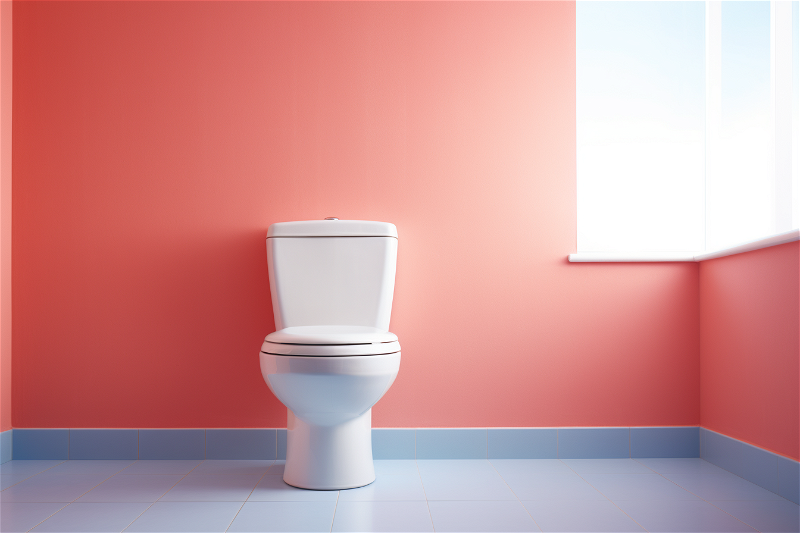
Introduction
The importance of maintaining a clean and hygienic toilet A clean toilet is not only crucial for maintaining a healthy home but also plays a significant role in personal hygiene. A dirty toilet can become a breeding ground for harmful bacteria, leading to potential health risks. Regular cleaning ensures a fresh and inviting bathroom environment for both residents and guests.
The benefits of professional cleaning techniques for a spotless toilet While most people clean their toilets regularly, using professional cleaning techniques can take the cleanliness and hygiene to a whole new level. Professional cleaners understand the intricacies of toilet cleaning and utilize effective methods to remove tough stains, eliminate odours, and ensure a thorough clean. By adopting these techniques, you can achieve a professionally cleaned toilet in the comfort of your own home.
A promise to share effective methods to achieve a professionally cleaned toilet at home In this article, we will delve into the secrets of professional toilet cleaning. From gathering the necessary supplies to implementing specialized techniques, we will guide you through each step to achieve a sparkling clean toilet. Get ready to transform your bathroom cleaning routine and discover the satisfaction of a professionally cleaned toilet at home.
Gather Your Cleaning Supplies
Essential cleaning tools and products required Before embarking on your toilet cleaning mission, it’s important to gather the necessary cleaning supplies. Some essential items include:
- Toilet bowl cleaner: Look for a cleaner specifically formulated for toilet bowls to effectively remove stains and kill germs.
- Toilet brush: Choose a brush with sturdy bristles that can reach all areas of the toilet bowl.
- Microfiber or disposable cleaning cloths: These are useful for wiping down the exterior surfaces of the toilet and applying cleaning products.
- Rubber gloves: Protect your hands from germs and harsh chemicals by wearing rubber gloves throughout the cleaning process.
- Disinfectant cleaner: Opt for a disinfectant that is safe for use on toilet surfaces to kill bacteria and viruses.
- Pumice stone (optional): If you have stubborn mineral deposits or hard water stains, a pumice stone can be used with caution to gently scrub away the buildup.
The significance of using quality cleaning materials for optimal results Investing in quality cleaning materials can make a noticeable difference in achieving a professionally cleaned toilet. High-quality toilet bowl cleaner will have powerful stain-removing properties and effectively eliminate germs. Likewise, a durable toilet brush with well-designed bristles will make scrubbing easier and more efficient. Microfiber or disposable cleaning cloths are effective in trapping dirt and debris without leaving behind lint or streaks. By using quality cleaning materials, you ensure better cleaning outcomes and a more satisfying experience.
Preparing the Toilet for Cleaning
Ensuring safety precautions Before you begin the cleaning process, it’s important to prioritize safety. Make sure the bathroom is well-ventilated by opening windows or turning on the exhaust fan to prevent inhaling any fumes from cleaning products. If you’re using strong chemicals, consider wearing a face mask for additional protection.
Clearing the area around the toilet To make the cleaning process more manageable, clear any objects or items from the immediate vicinity of the toilet. Remove toilet paper, toiletries, and any other personal belongings from the toilet tank, lid, and surrounding areas. This allows for better access and prevents accidental damage to these items during the cleaning process.
Putting on protective gloves Before you begin handling any cleaning products, it’s essential to protect your hands with rubber gloves. Gloves act as a barrier between your skin and potentially harsh chemicals, reducing the risk of irritation or contact with germs. Make sure to choose gloves that fit properly and are comfortable to wear throughout the cleaning process.
By following these initial steps, you are now ready to tackle the task!
Removing Surface Stains and Dirt
Using an appropriate toilet bowl cleaner Start the cleaning process by applying an appropriate toilet bowl cleaner to the inside of the toilet bowl. Make sure to follow the instructions provided by the manufacturer for the best results. Allow the cleaner to sit for a few minutes to penetrate and loosen any stains or dirt.
Applying the cleaner and letting it sit Using the applicator or nozzle provided with the toilet bowl cleaner, apply the cleaner evenly around the inside of the bowl, focusing on the areas with visible stains or discoloration. Be sure to cover the entire surface area, including under the rim and the waterline. Let the cleaner sit undisturbed for the recommended amount of time to allow it to work effectively.
Scrubbing the bowl with a toilet brush After the cleaner has had time to work, take a toilet brush and scrub the entire interior of the toilet bowl. Start from the top and work your way down, paying extra attention to areas with stubborn stains or build-up. Use firm but gentle pressure to ensure effective cleaning without damaging the toilet surface. Continue scrubbing until all stains and dirt have been removed.
Paying attention to hard-to-reach areas Don’t forget to clean the hidden or hard-to-reach areas of the toilet bowl. Use the toilet brush to clean under the rim, around the siphon jets, and any other crevices where bacteria or dirt may accumulate. Thoroughly scrubbing these areas will ensure a complete clean and prevent the build-up of bacteria over time.
Tackling Stubborn Stains and Mineral Deposits
Utilizing a specialized toilet cleaner for tough stains For stubborn stains and mineral deposits that regular toilet bowl cleaner cannot remove, consider using a specialized toilet cleaner designed specifically for tough stains. These cleaners often contain stronger ingredients or additives that help break down and dissolve mineral deposits and stubborn stains.
Applying the cleaner and allowing it to penetrate Follow the instructions provided by the specialized toilet cleaner and apply it to the affected areas, targeting the stains and mineral deposits directly. Allow the cleaner to sit for the recommended amount of time, as specified by the manufacturer. This will give the cleaner enough time to penetrate the stains and mineral deposits, making them easier to remove.
Scrubbing with a pumice stone or brush After the cleaner has had time to penetrate, use a pumice stone or a brush specifically designed for removing stains and mineral deposits. Gently scrub the affected areas, applying slight pressure as needed. Be cautious and avoid using excessive force that could damage the toilet surface. Continue scrubbing until the stains and mineral deposits have been successfully eliminated.
Being cautious to avoid damaging the toilet surface When using a pumice stone or specialized brush, be mindful of the toilet surface material. Some toilet bowls have delicate surfaces that can be scratched or damaged by abrasive materials. Always follow the manufacturer’s guidelines and recommendations for using these tools to avoid causing any harm.
Cleaning the Exterior Surfaces
Wiping down the toilet seat, lid, and surrounding areas To achieve a professionally cleaned toilet, it’s essential to pay attention to the exterior surfaces as well. Start by wiping down the toilet seat, lid, and any other visible surfaces using a damp microfiber cloth or disposable cleaning cloth. This will remove dust, dirt, and any residue that may have accumulated.
Using a disinfectant to kill bacteria and germs After wiping down the exterior surfaces, use a disinfectant cleaner to sanitize the toilet seat, lid, and other frequently touched areas. Spray the disinfectant directly onto the surfaces and allow it to sit for the recommended contact time specified by the product instructions. This will effectively kill bacteria, germs, and other harmful pathogens.
Paying attention to hinges, handles, and other often overlooked areas Don’t forget to clean the often overlooked areas of the toilet, such as the hinges, handles, and any other small crevices. Use a cleaning brush or a cotton swab dipped in a disinfectant cleaner to clean these areas thoroughly. Removing dirt and grime from these hidden spots will contribute to a professionally cleaned toilet and ensure overall cleanliness and hygiene.
By following these steps, you can effectively remove surface stains, tackle stubborn deposits, and clean the exterior surfaces of your toilet, bringing you one step closer to achieving a professionally cleaned toilet at home.
Cleaning the Toilet Tank
Turning off the water supply to the toilet Before cleaning the toilet tank, it’s important to turn off the water supply. Locate the water shut-off valve usually located on the wall behind or near the toilet. Turn the valve clockwise to shut off the water flow. This step is crucial to prevent any water leakage or accidents while cleaning the tank.
Emptying the tank and removing any debris Flush the toilet to empty most of the water from the tank. Next, remove the lid of the tank and inspect for any debris or sediment build-up. If there are any visible particles or sediment, use a small bucket or cup to scoop out the remaining water and dispose of it appropriately. Remove any debris present in the tank.
Wiping down the interior surfaces Take a damp cloth or sponge and wipe down the interior surfaces of the tank, including the walls, corners, and any visible stains or mineral deposits. Use a mild cleaning solution or a mixture of vinegar and water to effectively remove any build-up. Avoid using harsh chemicals or abrasive materials that can damage the tank’s components.
Reassembling the tank and restoring water supply Once the tank’s interior is clean, place the lid back on the tank, ensuring it is properly aligned. Turn the water shut-off valve counter clockwise to restore the water supply to the toilet. Allow the tank to fill up, and check for any leaks or abnormalities in the flushing mechanism. If everything appears to be in order, the tank cleaning process is complete.
Disinfecting and Deodorizing
Choosing a suitable disinfectant for the toilet To maintain a hygienic environment, it’s essential to disinfect the toilet. Select a disinfectant cleaner specifically formulated for toilets, ensuring it is safe for use on toilet surfaces. Look for products that are effective against a wide range of bacteria and viruses, providing comprehensive disinfection.
Applying the disinfectant to all surfaces Spray the disinfectant cleaner on all surfaces of the toilet, including the inside of the bowl, the exterior surfaces, and the toilet seat. Pay extra attention to commonly touched areas like the flush handle or buttons, ensuring they are thoroughly coated with the disinfectant. Follow the instructions on the product label for the appropriate contact time required for effective disinfection.
Letting it sit for the recommended time Allow the disinfectant to sit undisturbed for the recommended duration. This allows the disinfectant to work effectively, killing any bacteria or viruses present on the surfaces. Make sure to adhere to the specified contact time for optimal disinfection results.
Flushing the toilet to rinse away the disinfectant After the recommended contact time has elapsed, flush the toilet to rinse away the disinfectant from the surfaces. This step ensures that any residue or disinfectant traces are thoroughly removed, leaving behind a clean and sanitized toilet.
Using an air freshener or toilet deodorizer to eliminate odours To keep your toilet smelling fresh, consider using an air freshener or toilet deodorizer. Choose a product that neutralizes odours rather than masking them. Place the air freshener or deodorizer in an appropriate location within the bathroom to maintain a pleasant scent.
Regular Maintenance and Prevention Tips
Establishing a routine cleaning schedule To maintain a professionally cleaned toilet, establish a regular cleaning schedule. Set aside dedicated time each week to clean the toilet thoroughly. Consistency is key to prevent the buildup of stains, dirt, and bacteria.
Using toilet bowl cleaners and fresheners regularly In between deep cleaning sessions, use toilet bowl cleaners and fresheners regularly to maintain cleanliness. Follow the instructions provided by the manufacturer for the appropriate usage and frequency. These products help prevent the accumulation of stains, odours, and mineral deposits.
Avoiding the build-up of stains and dirt To prevent stubborn stains and dirt from accumulating, encourage household members to practice good toilet habits. Remind them to flush properly, avoid flushing non-flushable items, and promptly clean any spills or messes. These simple practices can significantly reduce the likelihood of stubborn stains or dirt build-up.
By following the steps to clean the toilet tank, disinfecting the surfaces, and implementing regular maintenance practices, you can achieve a professionally cleaned toilet that not only looks sparkling clean but also promotes a hygienic and odour-free bathroom environment.
Conclusion
Recap of the importance of professional cleaning techniques In conclusion, maintaining a clean and hygienic toilet is essential for a healthy home environment. By incorporating professional cleaning techniques, you can achieve a level of cleanliness that goes beyond regular cleaning routines. Professional cleaning methods target stubborn stains, mineral deposits, and hidden areas to ensure a truly spotless and germ-free toilet.
Encouraging readers to implement the discussed tips for a sparkling clean toilet at home We have provided a comprehensive guide on how to professionally clean a toilet at home. From gathering the necessary cleaning supplies to tackling surface stains, stubborn deposits, and disinfecting the entire toilet, following these steps will help you achieve a professionally cleaned toilet in the comfort of your own home.
By implementing these tips and techniques, you can enjoy a sparkling clean toilet that not only enhances the overall cleanliness of your bathroom but also contributes to a healthier and more inviting space for you and your family.
Remember to establish a regular cleaning schedule and practice preventive measures to minimize the buildup of stains, dirt, and odors. With a consistent cleaning routine, your toilet will remain in optimal condition, ensuring long-term cleanliness and hygiene.
So, take charge of your bathroom cleanliness and embrace the satisfaction of a professionally cleaned toilet at home. Say goodbye to stubborn stains and hello to a refreshing and sanitized toilet every time you step into the bathroom.






